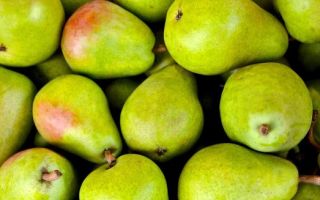The common pear is a tree with white flowers and fruits that are yellow, green with a reddish tint.
Content
Description and composition
There are several thousand varieties of pears, which differ in their appearance and chemical composition.
Fruits are used for treatment - fresh and dried.
Collection time is August-October.
Pear fruits have the following chemical composition :
- sugar - 6-10%,
- organic acids - malic acid predominates,
- substances - nitrogenous, pectin, tannin and ash,
- phytoncides,
- vitamins - A, B1, B2, PP, carotene, C (10 mg%),
- potassium, sodium, calcium, phosphorus, magnesium, iron.
For what diseases is it used?
The following properties are used for treatment:
- anti-inflammatory,
- antipyretic,
- antibacterial,
- astringent,
- enveloping,
- emollient,
- painkiller,
- antispasmodic,
- diuretic,
- antiseptic,
- wound healing.
Fresh pears, used in small quantities, regulate digestion and are perfectly absorbed by the human body.
A decoction of dried pears is useful for
- feverish conditions,
- has an analgesic, diuretic and fixative effect on diarrhea,
- bacteriouria,
- kidney stone disease.
Oatmeal broth with dried pears and pear jelly are very effective for children's diarrhea.
Boiled and baked pears are used for severe coughing, choking and pulmonary tuberculosis.
Pears are of great importance in dietary nutrition, especially for patients with diabetes, in the treatment and normalization of stomach function in children.
Methods of application
To treat diarrhea, prepare a decoction according to the following recipe:
Boil ½ cup of pears and 3 tablespoons of oatmeal in 2 cups of water, leave for 1 hour, strain. Take 1/4-1/2 cup 4 times a day on an empty stomach.
Boil 1 cup of dry chopped pears in ½ liter of water, leave for 4 hours, strain. Take ½ glass 4 times a day on an empty stomach.
Contraindications
It is not recommended to consume more quantity for chronic constipation.







